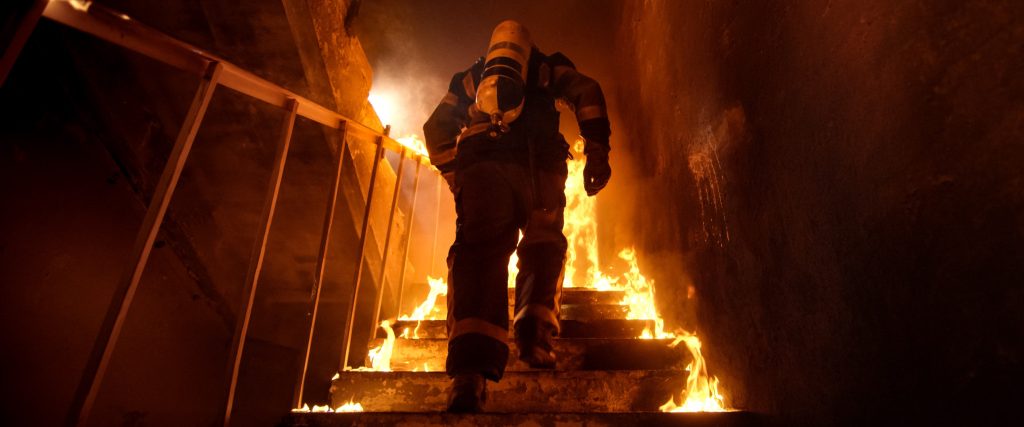What is FARS? Firefighter Air Replenishment System Explained
Firefighting is a challenging job, and the last thing a firefighter needs to worry about is running out of breathable air during operations. A firefighter air replenishment system, also known as FARS, is a way for firefighters to receive additional oxygen flow during an emergency operation.
Our focus here is to illuminate the benefits, key components, and the importance of adhering to code standards for these systems. As a front-runner in the fire protection industry, we prioritize firefighter safety and efficiency.
The Power of FARS: Benefits of a Firefighter Air Replenishment System
So, what is FARS? A Firefighter Air Replenishment System is the answer to the logistical challenges posed by complex firefighting scenarios. The FARS definition extends to the system’s ability to simplify air bottle refilling, enhance operational capabilities, and above all, promote firefighter safety and health.
Moreover, FARS enhances the efficiency of refilling air bottles, which traditionally could be a slow and cumbersome process. This could divert precious time away from firefighting efforts. A well-implemented Firefighter Air Replenishment System allows firefighters to refill their air bottles swiftly, enabling them to return to the scene faster and continue their vital work.
By increasing the operational time of firefighters, FARS also boosts their overall operational capabilities. This enables firefighters to execute more complex rescue operations, navigate challenging environments, and in turn, save more lives and property.
Here are the specific benefits that a firefighter air replenishment system brings to the table:
Enhanced Firefighter Safety and Health: FARS ensures a reliable source of breathable air throughout firefighting operations. It eliminates the need for firefighters to retreat to a distant air supply location, drastically reducing the risk of exhaustion and heat stress. This allows firefighters to stay focused on critical tasks and boosts their overall safety and health.
Efficient Air Bottle Refilling: With FARS, air bottle refilling is quick and streamlined. Firefighters can swap their empty air bottles for full ones at refill stations strategically located within the incident area. This eliminates time-consuming trips to off-site refill locations, allowing firefighters to stay on the scene and respond swiftly to emergencies.
Improved Operational Capabilities: FARS equips firefighters to operate more effectively in challenging situations. With a continuous supply of air, firefighters can work for extended periods without breaks. This enhanced operational capability results in more efficient search and rescue missions and better fire suppression methods.
At WSFP, we understand the importance of firefighter safety and operational efficiency. Through strategic partnerships, our firefighter air replenishment systems deliver these benefits and more. With our expertise and commitment to innovation, we provide reliable solutions that protect both firefighters and the communities they serve.
Inside FARS: Essential Components of a Firefighter Air Replenishment System
A firefighter air replenishment system is a lifeline for firefighters during emergencies. It consists of several critical components that come together to provide a reliable and efficient source of breathable air. Let’s take a closer look at the three primary elements of a firefighter air replenishment system.
Emergency air fill panel: This is a core component of the system. It enables firefighters to rapidly refill their air tanks. These panels, strategically located throughout a structure, provide convenient access points for firefighters to connect their breathing apparatus and replenish their air supply. With a user-friendly design and robust construction, the emergency air fill panel ensures quick air tank refills without wasting precious time.
Cascade air storage system: This is another key part of the firefighter air replenishment system. It stores and distributes large volumes of compressed air to multiple emergency air fill panels. Through a network of interconnected storage cylinders, the cascade air storage system guarantees a continuous supply of breathable air for firefighters, eliminating the need for cumbersome and time-consuming air tank exchanges.
Air monitoring system: This is crucial specifically for firefighter safety. It constantly monitors the quality of the air supply, alerting users to potential issues such as low oxygen levels or high levels of harmful gases. With advanced sensors and real-time monitoring capabilities, the air monitoring system provides an extra layer of safety, allowing firefighters to work confidently in any emergency situation.

Adhering to Code Standards: Why it Matters
Compliance with code standards is crucial when it comes to FARS. These systems aim to provide a reliable and efficient source of breathable air for firefighters during emergencies. By following the standards set by organizations like the National Fire Protection Association (NFPA), Compressed Gas Association (CGA), and American Society of Mechanical Engineers (ASME), we ensure our systems meet the highest safety and performance standards.
The NFPA, CGA, and ASME have set guidelines that regulate the design, installation, and maintenance of firefighter air replenishment systems. These standards cover various aspects, including minimum flow rates, pressure requirements, and safety features. By adhering to these standards, our systems are designed to withstand the challenges of firefighting operations and provide a dependable source of breathing air.
Ensuring the reliability and effectiveness of our systems is a top priority. By adhering to these guidelines, we can assist in preventing system failures and malfunctions that could endanger the safety of firefighters. Regular inspections, testing, and maintenance (which we do in-house) are crucial to detect and address any potential issues, working to ensure our systems are always ready to provide the necessary air in critical situations.
WSFP has the capacity to install and inspect firefighter air replenishment systems and their components in Arizona, Colorado, Texas, and Washington markets. Contact us today to learn more about how our firefighter air replenishment system components can enhance the safety and efficiency of your firefighting operations.

